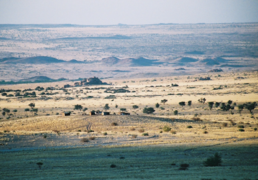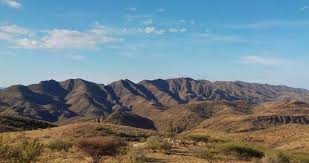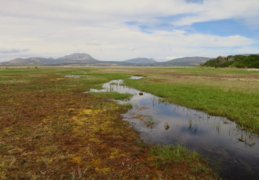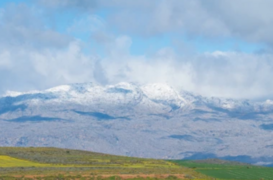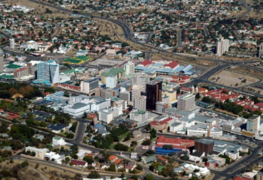Titechaxha: Difference between revisions
mNo edit summary |
|||
| (30 intermediate revisions by 2 users not shown) | |||
| Line 1: | Line 1: | ||
{{ | {{AbandonLore}} | ||
{{Infobox country | {{Infobox country | ||
|conventional_long_name = | |conventional_long_name = Democratic Republic of Titechaxha | ||
|native_name = | |native_name = | ||
|image_flag = Flag | |image_flag = Telo Flag.png | ||
|alt_flag = <!--alt text for flag (text shown when pointer hovers over flag)--> | |alt_flag = <!--alt text for flag (text shown when pointer hovers over flag)--> | ||
|flag_border = <!--set to no to disable border around the flag--> | |flag_border = <!--set to no to disable border around the flag--> | ||
| Line 10: | Line 10: | ||
|alt_flag2 = <!--alt text for second flag--> | |alt_flag2 = <!--alt text for second flag--> | ||
|flag2_border = <!--set to no to disable border around the flag--> | |flag2_border = <!--set to no to disable border around the flag--> | ||
|image_coat = | |image_coat = Telo Seal.png | ||
|alt_coat = <!--alt text for coat of arms--> | |alt_coat = <!--alt text for coat of arms--> | ||
|symbol_type = <!--emblem, seal, etc (if not a coat of arms)--> | |symbol_type = <!--emblem, seal, etc (if not a coat of arms)--> | ||
|national_motto = | |national_motto = Iuikpa ueyatl niiluikatl | ||
|englishmotto = | |englishmotto = "From sea to sky" | ||
|national_anthem = | |national_anthem = | ||
|royal_anthem = | |royal_anthem = | ||
|other_symbol_type = <!--Use if a further symbol exists, e.g. hymn--> | |other_symbol_type = <!--Use if a further symbol exists, e.g. hymn--> | ||
|other_symbol = | |other_symbol = | ||
|image_map = | |image_map = TiteLoc.png | ||
|map_caption = Location of '''Titechaxha''' (green) in eastern [[Crona]] (gray). | |||
|map_width = 195px | |||
|map_caption = | |||
|image_map2 = <!--Another map, if required--> | |image_map2 = <!--Another map, if required--> | ||
|alt_map2 = <!--alt text for second map--> | |alt_map2 = <!--alt text for second map--> | ||
|map_caption2 = <!--Caption to place below second map--> | |map_caption2 = <!--Caption to place below second map--> | ||
|capital = | |capital = Tibokro | ||
|largest_city = | |largest_city = capital | ||
|official_languages = | |official_languages = | ||
|ethnic_groups = | |ethnic_groups = | ||
|religion = | |religion = Various Indigenous | ||
|demonym = | |demonym = Titechaxhan<br>Chaxhan | ||
|government_type = Republic | |||
|leader_title1 = President | |||
|government_type = | |leader_name1 = M'Nele Tytole | ||
|leader_title1 = | |leader_title2 = Vice President | ||
|leader_name1 = | |leader_name2 = Peleba Kolouda | ||
|leader_title2 = | |leader_title3 = | ||
|leader_name2 = | |leader_name3 = | ||
|leader_title3 = | |||
|leader_name3 = | |||
|legislature = | |legislature = | ||
|upper_house = | |upper_house = First Congress | ||
|lower_house = | |lower_house = | ||
|established_event1 = | |established_event1 = Sovereign Recognition by [[League of Nations]] | ||
|established_date1 = | |established_date1 = [[1971]] | ||
|area_rank = | |area_rank = | ||
|area = | |area = | ||
|population_estimate = | |population_estimate = 38,920,144 | ||
|population_census = | |population_census = | ||
|GDP_nominal = | |GDP_nominal = 1,111,831,753,648 | ||
|GDP_nominal_per_capita = | |GDP_nominal_per_capita = 28,567 | ||
|currency = | |currency = [[Cronan lira]] | ||
|currency_code = | |currency_code = | ||
|time_zone = <!--e.g. GMT, PST, AST, etc, etc (wikilinked if possible)--> | |time_zone = <!--e.g. GMT, PST, AST, etc, etc (wikilinked if possible)--> | ||
| Line 61: | Line 58: | ||
}} | }} | ||
'''Titechaxha''', officially the ''' | '''Titechaxha''', officially the '''Cronan Democratic Republic of Titechaxha''', is a country in [[Crona]]. It shares land borders with [[Arcerion]], [[New Archduchy]], [[Kelekona]], [[Varshan]], [[Chakailan]] and [[Telonaticolan]]. Its Eastern Border is the Odoneru Ocean. Its largest city is the capital, [[Tibokro]]. | ||
Titechaxha is one of the least developed nations in Crona, although recent investments by [[Occidental world|Occidental]] and [[Coscivian civilisation|Coscivian]] companies have started to contribute to a growing GDP and rising Human Development Index. Titechaxha has been inhabited since ancient times by a number of tribes, notably the Dan-ton and Himabe peoples as part of the broader [[North Songun civilization|North Songun Civilization]]. Since the end of the North Songun Civilization, Titexchaxha's population has been a mixture of its existing two tribes, as well as a refugee diaspora from the settlement and colonization of Arcerion. With a population of 38,920,144 citizens and permanent residents, it is less populated than many other contemporary countries in Crona, such as Kelekona or Arcerion. | |||
Titexchaxa was never settled by Occidental powers due to its lack of natural resources, as well as the threat posed by [[Varshan]] during the Cronan Colonial Era of the 17th-19th centuries. It remained a semi-sovereign state throughout the 1600s and 1700s under Varshan as a stable tributary state, notionally under the control of some of the upper caste of Varshani society, however it was a functioning sovereign state from the turn of the 20th century until modern day with less and less Varshani involvement or control. The League of Nations recognized Titechaxha as an independent nation in 1971 as an independent state, and the Democratic Republic sent a representative for the 1972 legislative sitting. Titchaxha has strained diplomatic relationships with Arcerion and the New Archduchy, owing to its indigenous roots and anti-Occidental views and recent history from both the 1988 Civil War, as well as its participation in the [[Arcer Bush Wars]] on the side of the Indigenous Coalition. | |||
Titechaxha is current an impoverished, semi-stable democracy. Agriculture, tourism, and fishing remain the major industries. There exists a limit mining industry in the [[Northumbraeland Mountains]], as well as some mineral extraction in the Western Highlands, although this remains dwarfed by the Arcer economy to the South. | |||
==Etymology== | ==Etymology== | ||
==Geography== | ==Geography== | ||
<gallery mode="packed"> | |||
File:Tite grasslands.PNG|The Central Plateau or Grass Sea in central Titechaxha. | |||
File:Tite western highland.jpg|Western Highlands of Titechaxha. | |||
File:Tite coastal wetlands.PNG|The Coastal Lowlands that spread along the length of Titechaxha's Odoneru Coastline. | |||
File:Northumbraeland mountains.PNG|The country borders the Northumbraeland Mountains with [[Arcerion]] | |||
File:Tite capital city.PNG|Tibokro, the largest urban centre and capital city of Titechaxha. | |||
</gallery> | |||
At XYZ km² Titechaxha is one of the smaller countries in Crona. Being situated between Arcerion, Kelekona, and Telonaticolan, it lies in a natural basin with few rivers or inland waterways. Titechaxha is generally divided into four major geographical regions, the Western Highlands, Central Plateau, Coastal Lowlands, and the Northumbraeland Mountains. Each of these areas has slightly varied geographic features and plant/animal life. | |||
The Western Highlands represent the area that stretches from the tri-border area with League-occupied Varshan and Kelekona, up to the border with Telonaticolan. It is in this point where the highets mountain, Mount Yorontza lies, near the tri-border area with an elevation of 2,416 metres (7,926 ft). The Central Plateau is a vast expanse of wildland and grassland that spans the breadth of Titechaxha, from the Arcer to Telonaticolan border. It is the characteristic central geographic feature of Titexchaxha and the one it is most known for, locally the Central Plateau is referred to as the 'Grass Sea.' The area sees a mixture of climates due to winds coming off of the Western Highlands and Western-blowing winds coming off of the Odoneru Ocean. | |||
The Coastal Lowlands are centralized around the cities of Marayahi (in the North) and Noniaka (in the South). These areas represent another biome, that being tropical coastal areas rich with vegetation, wildlife, as well as tropical wetlands. Much of the well-irrigated agriculture in Titexhcaxha comes from these regions. This area receives the greatest amount of precipitation, and is frequented by tropical storms coming off of the Odoneru Ocean. The Coastal Lowlands is home to thousands of species of plants and hundreds of wildlife species, and the stable precipitation and the high volume of rain make it fertile ground for both mammal and reptile species. The Coastal Lowlands also have one of the largest unexplored offshore marine resource areas in Crona. | |||
In the South, the Northumbraeland Mountains extend into the Southeastern portion of Titechaxha, and are shared with the New Archduchy and Arcerion. This is also the start point of two major rivers, the North Innis and Leigh Rivers, that flow through Arcerion and into the Innis River Basin in the Malentine Sea. | |||
==History== | ==History== | ||
=== | ===North Songun Civilization=== | ||
{{Main|North Songun civilization}} | {{Main|North Songun civilization}} | ||
In the 1590s, Varshan established Titechaxha as a new [[North_Songun_civilization#Aftermath|stable tributary state]]. | |||
=== | ===Dependency of Varshan=== | ||
=== | ===Formation of Titechaxha=== | ||
{{Main|The Hunt (Varshan)}} | {{Main|The Hunt (Varshan)}} | ||
===Modern period=== | ===Modern period=== | ||
==== 20th century semi-independence ==== | |||
Varshan controls dropping | |||
some investment and modern port construction | |||
emigration from refugees | |||
small economic boom | |||
sits out of the 1GW and 2GW | |||
==== 1983 Coup ==== | ==== 1983 Coup ==== | ||
| Line 85: | Line 115: | ||
====Final War of the Deluge==== | ====Final War of the Deluge==== | ||
{{Main|Albion affair}} | {{Main|Albion affair}}Gunboat diplomacy | ||
==Government== | ==Government== | ||
Titechaxha is a unitary semi-presidential representative democratic republic. The President of Titechaxha is elected every five years for a five-year term and acts as both the head of state as well as the head of government. Members of the government, including People's Representatives in the First Congress are individually and collective responsible to the legislature and only House of Representatives, the First Congress. | |||
The Titechaxhan constitution has taken three forms, the first with the ascension to the League of Nations in 1971. The second review during the brief 1998-2001 socialist government that made Titechaxha into a Socialist People's Republic, and lastly the 2001 populist government during the Arcerion-backed ''coup d'etat'' and constitutional crisis. | |||
The current constitution, the 2001-2002 review, outlines the following instruments of power for the Titechaxhan state: | |||
* Executive: executive power is exercised by the President, Vice President, and Cabinet Ministers; | |||
* Legislature: Titechaxha's legislative assembly, the First Congress, acts as the lower and upper house and has the authority to review and pass laws; | |||
* Judiciary: There exists two levels of courts (and a parallel civil/criminal system) under the Chief Justice of Titechaxha, appointed via Congressional vote. | |||
Titechaxha has officially maintained a multi-party system since the 2001 reforms, but the dominant political force has been the Chaxhan Party, which is described as centre-right, populist and has maintained the majority of seats in the First Congress and the Presidency since 2001. | |||
===Executive=== | ===Executive=== | ||
The executive of Titechaxha is outlined in its modern context by the constitution of 2001 vintage. The President and the executive cabinet and their powers are enshrined in the constitution, namely the ability to sign laws, veto bills in congress, appoint judges and other non-elected officials. The cabinet ministers are also all appointed via the Presidential office and receive their own enshrined powers, notably diplomatic immunity and a limited oversight from internal regulatory agencies. While this has long led to suspicions of corruption and grift from federal officials, there is a limited amount of investigations that can be completed by the internal security apparatus of the state. | |||
The President resides in the Presidential palace in Tibokro. | |||
===Legislature=== | ===Legislature=== | ||
congress and that's it | |||
===Local governance=== | ===Local governance=== | ||
municipal and state | |||
==Culture== | ==Culture== | ||
| Line 96: | Line 145: | ||
== Demographics == | == Demographics == | ||
{{Pie chart | |||
| radius = 100 | |||
| thumb = right | |||
| caption = Self-reported ethnic origin in the the Cronan Democratic Republic of Titechaxha | |||
| other = | |||
| label1 =Chaxhan | |||
| value1 =56.4 | |||
| color1 =Yellow | |||
| label2 =Coastal Kobro | |||
| value2 =17.2 | |||
| color2 =Green | |||
| label3 =Inland Kobro | |||
| value3 =12.1 | |||
| color3 =Orange | |||
| label4 =Omotrey | |||
| value4 =7.2 | |||
| color4 =Blue | |||
| label5 =Other Indigenous | |||
| value5 =3.5 | |||
| color5 =White | |||
| label6 =Arcer and other Occidental | |||
| value6 = 4.4 | |||
| color6 =Red | |||
| label7 = | |||
| value7 = | |||
| color7 = | |||
}} | |||
=== Linguistic Demographics === | === Linguistic Demographics === | ||
=== Religious Demographics === | |||
==Economy== | |||
Titechaxha's economy is tied closely to those of Arcerion and the New Archduchy due to their shared history and Titechaxha's geography placing it within the wider Arcosphere. In 2030, the largest sectors of the GDP were agriculture (32%), cobalt and nickel mining (11%) and lastly tourism (4.8%). | |||
Titechaxha has a limited finance and white-collar finance industry, which is generally considered to be an offshoot and expansion of the Arcer finance system centered around Kinnaird. The Central Bank of Titechaxha is the central government-organized and managed financial institution in the country. It performs the usual functions of a central bank, such as controlling inflation and coordinating with other Cronan partners to manage the usage and issuance of the [[Cronan lira]]. There is a considerable gap between the legitimate economy and the black market in Titechaxha, as the government's weak internal revenue and tax bureaus, as well as a lack of a digitized economy mean that there is a thriving unreported or non-taxable black/grey economy. It struggles to maintain a more digitized and modern financial sector due to the proximity to New Archduchy, a highly developed post-industrial economy, and the prevalence of Arcer banks and financial institutions. | |||
Titechaxha's unemployment rate fluctuates based on season, as the winter (non-farming) usually has a spike, adding 10-15% to the workforce or those seeking work, however in 2033 the average unemployment rate was 27%. It has a skilled labour workforce and a slow growth manufacturing industry along the coast, usually found in the major cities such as Tibokro or Noniaka. The government's attempts to lower unemployment have largely failed, despite their efforts to attract foreign investment from non-Cronan parties. This has led to unemployed Chaxhans participating in the illegal economy with activities such as arms trafficking, smuggling, and in some cases piracy. | |||
In 2029 the [[Kinnaird Financial Times]] listed the Titechaxhan economy as a 'developing' one, but with the potential for massive growth in the 2030s with the end of Varshan and the Final War of the Deluge. Titechaxha was rated ahead of [[Washakara]], [[Malentina]], [[Telonaticolan]], and [[Chakailan]], all of them indigenous contemporaries. This data came from the Times' own research, internal statistical reporting from the Central Bank of Titechaxha, and international audits from the League of Nations. Attempts to continue to drive growth in the 2030s have led the Titechaxhan Secretary of Finance travelling to other major Cronan and non-Cronan countries, as well as making repeated appeals to the League of Nations for infrastructure investment. Concurrently, the Secretary of the Interior has slashed bureaucratic processes and worked with the First Congress to reduce legislative boundaries to new businesses. | |||
The cost of living in Titechaxha is above the Cronan average due to its status as an import economy and the availability of manufactured products, foodstuffs, electronics, and consumer goods from the New Archduchy and Arcerion. | |||
The Chaxhan Tax Service is the internal revenue and taxation bureau of the state, and has both personal income tax, business tax, and sales tax. There is a progressive tax based on personal income that is seen as progressive and liberal, allowing for the accumulation of personal wealth. Titechaxha has also kept foreign investment tax rates or property taxes on foreign land purchasing low, which has helped attract some foreign ivnestment, particularly from Arcer agricultural conglomerates and wealthy Levantine expatriates. | |||
Despite the overall developing status of the country, Titechaxha has several modern seaports, one large Occidental-style international airport, and paved roads in its urban centres with some multi-lane highways. Rail transport is largely done through a subsidiary of the [[Arco National Railway Service]], Chaxhan Freight and Rail. The Central Plateau is a major throughfare for South Cronan goods heading into North and Central Crona, meaning that there are several large railside towns in central Titechaxha. | |||
==Military== | ==Military== | ||
As of the late 2020s, [[Jones' Defence]] ranked the Titechaxhan Security Forces (TSF) as the one of the weakest in South Crona. The government's Secretary for Defense oversees a budget of several billion Cronan lira, however extensive corruption, a lack of modern equipment, and poor training standards have led to a gradual decline in the military's effectiveness. As well, the 1998 Civil War and the 2001 Presidential Abdication both resulted in internal faction violence that damaged the military as factions split and fought themselves. | |||
Traditionally, prior to 2001 the Security Forces were oriented for internal defense against insurgencies and non-state actors, and was organized as a force to defend itself from an Arcer invasion. During the Occidental Cold War it participated in actions against the Armed Forces of Arcerion. Today, the modern Security Forces mostly deal with border disputes with Kelekona, Telonaticolan, and Chakailan. | |||
The constitution of Titechaxha defines the role of the Security Forces as defending the national interest and providing security to the government. The Security Forces are separated into four branches, the Land Force, the Air Force, the Navy, as well as the Presidential Guard. Titechaxha currently has approximately ~200,000 service personnel. The Land Forces are organized roughly into several brigades, mostly made up of motorized infantry, although it does have some aging armoured fighting vehicles left over from the Occidental Cold War. The Air Force have several dozen second-generation jet fighters, as well as some helicopters which are mainly used for VIP transport and logistical support. The Chaxhan Navy has a mixture of Second Great War-vintage destroyers and frigates, upgraded with some modern sensors and radars however they are all in relative states of disrepair. The Presidential Guard is considered to be the most effective part of the Security Forces, and has eight battalions of motorized infantry with modern weapons, radios and training. The Presidential Gaurd is responsible for security at the Presidential Palace, First Congress, as well as an internal security mandate that classifies them as a ''gendarmerie''. | |||
{{Template:Award winning article}} | |||
[[Category:2024 Award winning pages]] | |||
[[Category: | [[Category:2023 Award winning pages]] | ||
[[Category: 2023 | [[Category:IXWB]] | ||
[[Category: | |||
Latest revision as of 09:17, 1 July 2024
This article is considered abandoned lore either because its creator has changed projects or has left the community. Accordingly, it is not only non-canon but it is also eligible for salvage pending approval from an administrator.
|
Democratic Republic of Titechaxha | |
|---|---|
Motto: Iuikpa ueyatl niiluikatl "From sea to sky" | |
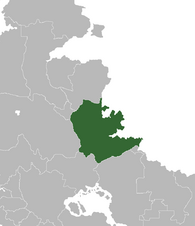 Location of Titechaxha (green) in eastern Crona (gray). | |
| Capital and largest city | Tibokro |
| Religion | Various Indigenous |
| Demonym(s) | Titechaxhan Chaxhan |
| Government | Republic |
• President | M'Nele Tytole |
• Vice President | Peleba Kolouda |
| First Congress | |
| Establishment | |
• Sovereign Recognition by League of Nations | 1971 |
| Population | |
• Estimate | 38,920,144 |
| GDP (nominal) | estimate |
• Total | 1,111,831,753,648 |
• Per capita | 28,567 |
| Currency | Cronan lira |
Titechaxha, officially the Cronan Democratic Republic of Titechaxha, is a country in Crona. It shares land borders with Arcerion, New Archduchy, Kelekona, Varshan, Chakailan and Telonaticolan. Its Eastern Border is the Odoneru Ocean. Its largest city is the capital, Tibokro.
Titechaxha is one of the least developed nations in Crona, although recent investments by Occidental and Coscivian companies have started to contribute to a growing GDP and rising Human Development Index. Titechaxha has been inhabited since ancient times by a number of tribes, notably the Dan-ton and Himabe peoples as part of the broader North Songun Civilization. Since the end of the North Songun Civilization, Titexchaxha's population has been a mixture of its existing two tribes, as well as a refugee diaspora from the settlement and colonization of Arcerion. With a population of 38,920,144 citizens and permanent residents, it is less populated than many other contemporary countries in Crona, such as Kelekona or Arcerion.
Titexchaxa was never settled by Occidental powers due to its lack of natural resources, as well as the threat posed by Varshan during the Cronan Colonial Era of the 17th-19th centuries. It remained a semi-sovereign state throughout the 1600s and 1700s under Varshan as a stable tributary state, notionally under the control of some of the upper caste of Varshani society, however it was a functioning sovereign state from the turn of the 20th century until modern day with less and less Varshani involvement or control. The League of Nations recognized Titechaxha as an independent nation in 1971 as an independent state, and the Democratic Republic sent a representative for the 1972 legislative sitting. Titchaxha has strained diplomatic relationships with Arcerion and the New Archduchy, owing to its indigenous roots and anti-Occidental views and recent history from both the 1988 Civil War, as well as its participation in the Arcer Bush Wars on the side of the Indigenous Coalition.
Titechaxha is current an impoverished, semi-stable democracy. Agriculture, tourism, and fishing remain the major industries. There exists a limit mining industry in the Northumbraeland Mountains, as well as some mineral extraction in the Western Highlands, although this remains dwarfed by the Arcer economy to the South.
Etymology
Geography
-
The Central Plateau or Grass Sea in central Titechaxha.
-
Western Highlands of Titechaxha.
-
The Coastal Lowlands that spread along the length of Titechaxha's Odoneru Coastline.
-
The country borders the Northumbraeland Mountains with Arcerion
-
Tibokro, the largest urban centre and capital city of Titechaxha.
At XYZ km² Titechaxha is one of the smaller countries in Crona. Being situated between Arcerion, Kelekona, and Telonaticolan, it lies in a natural basin with few rivers or inland waterways. Titechaxha is generally divided into four major geographical regions, the Western Highlands, Central Plateau, Coastal Lowlands, and the Northumbraeland Mountains. Each of these areas has slightly varied geographic features and plant/animal life.
The Western Highlands represent the area that stretches from the tri-border area with League-occupied Varshan and Kelekona, up to the border with Telonaticolan. It is in this point where the highets mountain, Mount Yorontza lies, near the tri-border area with an elevation of 2,416 metres (7,926 ft). The Central Plateau is a vast expanse of wildland and grassland that spans the breadth of Titechaxha, from the Arcer to Telonaticolan border. It is the characteristic central geographic feature of Titexchaxha and the one it is most known for, locally the Central Plateau is referred to as the 'Grass Sea.' The area sees a mixture of climates due to winds coming off of the Western Highlands and Western-blowing winds coming off of the Odoneru Ocean.
The Coastal Lowlands are centralized around the cities of Marayahi (in the North) and Noniaka (in the South). These areas represent another biome, that being tropical coastal areas rich with vegetation, wildlife, as well as tropical wetlands. Much of the well-irrigated agriculture in Titexhcaxha comes from these regions. This area receives the greatest amount of precipitation, and is frequented by tropical storms coming off of the Odoneru Ocean. The Coastal Lowlands is home to thousands of species of plants and hundreds of wildlife species, and the stable precipitation and the high volume of rain make it fertile ground for both mammal and reptile species. The Coastal Lowlands also have one of the largest unexplored offshore marine resource areas in Crona.
In the South, the Northumbraeland Mountains extend into the Southeastern portion of Titechaxha, and are shared with the New Archduchy and Arcerion. This is also the start point of two major rivers, the North Innis and Leigh Rivers, that flow through Arcerion and into the Innis River Basin in the Malentine Sea.
History
North Songun Civilization
In the 1590s, Varshan established Titechaxha as a new stable tributary state.
Dependency of Varshan
Formation of Titechaxha
Modern period
20th century semi-independence
Varshan controls dropping
some investment and modern port construction
emigration from refugees
small economic boom
sits out of the 1GW and 2GW
1983 Coup
Coup supported secretly by Arco
1998 Civil War
reinstallation of pro-socialist government
2001 Presidential Abdication
arco forced
Final War of the Deluge
Gunboat diplomacy
Government
Titechaxha is a unitary semi-presidential representative democratic republic. The President of Titechaxha is elected every five years for a five-year term and acts as both the head of state as well as the head of government. Members of the government, including People's Representatives in the First Congress are individually and collective responsible to the legislature and only House of Representatives, the First Congress.
The Titechaxhan constitution has taken three forms, the first with the ascension to the League of Nations in 1971. The second review during the brief 1998-2001 socialist government that made Titechaxha into a Socialist People's Republic, and lastly the 2001 populist government during the Arcerion-backed coup d'etat and constitutional crisis.
The current constitution, the 2001-2002 review, outlines the following instruments of power for the Titechaxhan state:
- Executive: executive power is exercised by the President, Vice President, and Cabinet Ministers;
- Legislature: Titechaxha's legislative assembly, the First Congress, acts as the lower and upper house and has the authority to review and pass laws;
- Judiciary: There exists two levels of courts (and a parallel civil/criminal system) under the Chief Justice of Titechaxha, appointed via Congressional vote.
Titechaxha has officially maintained a multi-party system since the 2001 reforms, but the dominant political force has been the Chaxhan Party, which is described as centre-right, populist and has maintained the majority of seats in the First Congress and the Presidency since 2001.
Executive
The executive of Titechaxha is outlined in its modern context by the constitution of 2001 vintage. The President and the executive cabinet and their powers are enshrined in the constitution, namely the ability to sign laws, veto bills in congress, appoint judges and other non-elected officials. The cabinet ministers are also all appointed via the Presidential office and receive their own enshrined powers, notably diplomatic immunity and a limited oversight from internal regulatory agencies. While this has long led to suspicions of corruption and grift from federal officials, there is a limited amount of investigations that can be completed by the internal security apparatus of the state.
The President resides in the Presidential palace in Tibokro.
Legislature
congress and that's it
Local governance
municipal and state
Culture
Cuisine
Demographics
Self-reported ethnic origin in the the Cronan Democratic Republic of Titechaxha
Linguistic Demographics
Religious Demographics
Economy
Titechaxha's economy is tied closely to those of Arcerion and the New Archduchy due to their shared history and Titechaxha's geography placing it within the wider Arcosphere. In 2030, the largest sectors of the GDP were agriculture (32%), cobalt and nickel mining (11%) and lastly tourism (4.8%).
Titechaxha has a limited finance and white-collar finance industry, which is generally considered to be an offshoot and expansion of the Arcer finance system centered around Kinnaird. The Central Bank of Titechaxha is the central government-organized and managed financial institution in the country. It performs the usual functions of a central bank, such as controlling inflation and coordinating with other Cronan partners to manage the usage and issuance of the Cronan lira. There is a considerable gap between the legitimate economy and the black market in Titechaxha, as the government's weak internal revenue and tax bureaus, as well as a lack of a digitized economy mean that there is a thriving unreported or non-taxable black/grey economy. It struggles to maintain a more digitized and modern financial sector due to the proximity to New Archduchy, a highly developed post-industrial economy, and the prevalence of Arcer banks and financial institutions.
Titechaxha's unemployment rate fluctuates based on season, as the winter (non-farming) usually has a spike, adding 10-15% to the workforce or those seeking work, however in 2033 the average unemployment rate was 27%. It has a skilled labour workforce and a slow growth manufacturing industry along the coast, usually found in the major cities such as Tibokro or Noniaka. The government's attempts to lower unemployment have largely failed, despite their efforts to attract foreign investment from non-Cronan parties. This has led to unemployed Chaxhans participating in the illegal economy with activities such as arms trafficking, smuggling, and in some cases piracy.
In 2029 the Kinnaird Financial Times listed the Titechaxhan economy as a 'developing' one, but with the potential for massive growth in the 2030s with the end of Varshan and the Final War of the Deluge. Titechaxha was rated ahead of Washakara, Malentina, Telonaticolan, and Chakailan, all of them indigenous contemporaries. This data came from the Times' own research, internal statistical reporting from the Central Bank of Titechaxha, and international audits from the League of Nations. Attempts to continue to drive growth in the 2030s have led the Titechaxhan Secretary of Finance travelling to other major Cronan and non-Cronan countries, as well as making repeated appeals to the League of Nations for infrastructure investment. Concurrently, the Secretary of the Interior has slashed bureaucratic processes and worked with the First Congress to reduce legislative boundaries to new businesses.
The cost of living in Titechaxha is above the Cronan average due to its status as an import economy and the availability of manufactured products, foodstuffs, electronics, and consumer goods from the New Archduchy and Arcerion.
The Chaxhan Tax Service is the internal revenue and taxation bureau of the state, and has both personal income tax, business tax, and sales tax. There is a progressive tax based on personal income that is seen as progressive and liberal, allowing for the accumulation of personal wealth. Titechaxha has also kept foreign investment tax rates or property taxes on foreign land purchasing low, which has helped attract some foreign ivnestment, particularly from Arcer agricultural conglomerates and wealthy Levantine expatriates.
Despite the overall developing status of the country, Titechaxha has several modern seaports, one large Occidental-style international airport, and paved roads in its urban centres with some multi-lane highways. Rail transport is largely done through a subsidiary of the Arco National Railway Service, Chaxhan Freight and Rail. The Central Plateau is a major throughfare for South Cronan goods heading into North and Central Crona, meaning that there are several large railside towns in central Titechaxha.
Military
As of the late 2020s, Jones' Defence ranked the Titechaxhan Security Forces (TSF) as the one of the weakest in South Crona. The government's Secretary for Defense oversees a budget of several billion Cronan lira, however extensive corruption, a lack of modern equipment, and poor training standards have led to a gradual decline in the military's effectiveness. As well, the 1998 Civil War and the 2001 Presidential Abdication both resulted in internal faction violence that damaged the military as factions split and fought themselves.
Traditionally, prior to 2001 the Security Forces were oriented for internal defense against insurgencies and non-state actors, and was organized as a force to defend itself from an Arcer invasion. During the Occidental Cold War it participated in actions against the Armed Forces of Arcerion. Today, the modern Security Forces mostly deal with border disputes with Kelekona, Telonaticolan, and Chakailan.
The constitution of Titechaxha defines the role of the Security Forces as defending the national interest and providing security to the government. The Security Forces are separated into four branches, the Land Force, the Air Force, the Navy, as well as the Presidential Guard. Titechaxha currently has approximately ~200,000 service personnel. The Land Forces are organized roughly into several brigades, mostly made up of motorized infantry, although it does have some aging armoured fighting vehicles left over from the Occidental Cold War. The Air Force have several dozen second-generation jet fighters, as well as some helicopters which are mainly used for VIP transport and logistical support. The Chaxhan Navy has a mixture of Second Great War-vintage destroyers and frigates, upgraded with some modern sensors and radars however they are all in relative states of disrepair. The Presidential Guard is considered to be the most effective part of the Security Forces, and has eight battalions of motorized infantry with modern weapons, radios and training. The Presidential Gaurd is responsible for security at the Presidential Palace, First Congress, as well as an internal security mandate that classifies them as a gendarmerie.


